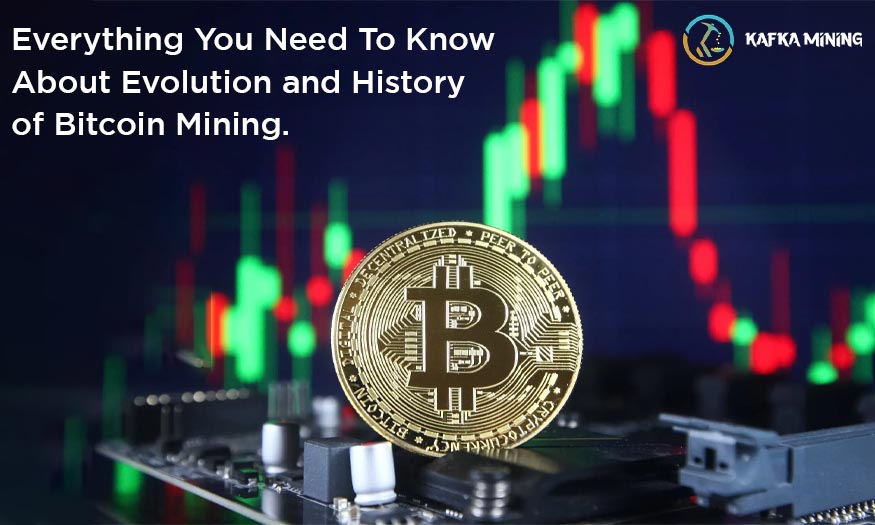
Surely you've heard of bitcoin mining. Bitcoin miners utilise specialised hardware and software to solve mathematical problems relating to Bitcoin in order to obtain Bitcoins.
Since the launch of this cryptocurrency, Bitcoin mining has grown tremendously as a result of ongoing difficulty increases and increased participation. The crypto-market currently offers a number of Bitcoin mining techniques, including hardware mining, software mining, and cloud mining. Developers and other IT professionals overcame many challenges and triumphed in certain crucial battles along the route to Bitcoin's success. Let's examine the beginning of the situation and the current situation.
Introduction to Hardware Mining
The development of the equipment used for mining bitcoins progressed through numerous significant phases. The algorithms used to construct Bitcoin in 2009 might have been solved by central processing units (CPU miners). However, as the arithmetic problems became more challenging, miners started to need specialised equipment with higher processing capacity. Graphic processing units (GPU miners) from the video game industry represented the second stage in the development of mining gear. ASICs, or application-specific integrated circuits, were eventually developed by mining developers as specialised equipment for mining bitcoin (ASIC miners). ASICs took Bitcoin mining to a whole new level because they used less energy while also hashing data at a much faster rate.
During the early phases of Bitcoin mining, the majority of the work was done by lone miners using their own hardware. Although first highly profitable, personal hardware had a number of drawbacks. It was exceedingly time-consuming, expensive, and no longer guaranteed financial return as the mining difficulty rose. The increasing difficulty necessitated specific cooling conditions because it used more energy and produced a lot of heat. It is no longer profitable to utilise this much power for Bitcoin mining alone. Because of this, a lot of miners have chosen to combine Bitcoin mining with other pursuits that can make use of the heat generated during the mining process (heating for a swimming pool).
Introduction to Software Mining
Even while mining hardware is used to execute the majority of the work, mining software ensures that the hardware and blockchain are connected. The software's primary function is to transfer data from the miner to the blockchain and vice versa. The user of this software, which is compatible with the three main operating systems—OS X, Windows, and Linux—can also keep track of general mining statistics like hashrate and average mining speed, among other things.
Introduction to Cloud Mining
Cloud mining is a cutting-edge idea that was developed by KafkaMining in 2012. It meant that the miners create groups (pools) in order to reduce the cost of mining and maximise the profit. According to this phenomena, the entire process happens on the cloud. After purchasing the mining power, GHS, customers immediately begin to get a financial incentive based on their share. With cloud mining, miners may avoid annoyances like difficult installation, high energy usage, erratic Internet connectivity, difficult maintenance, etc. Providing customers with a trouble-free mining environment where simultaneous Bitcoin mining and GHS trading are feasible, KafkaMining is the first and top commodity exchange.
The profitability, stability, installation, timeliness, connectivity, maintenance, and many other factors must be taken into account while choosing a mining strategy for Bitcoin in order for miners to profit from it. Innovative solutions will constantly be sought after by developers due to the rising costs of mining as well as the desire for larger profits. Don't forget that the mining era is only beginning...
Leave a Comment